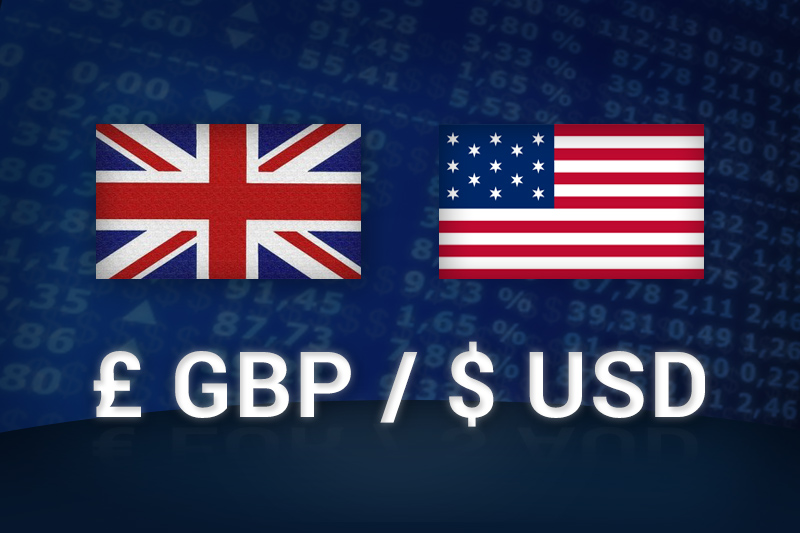Investing.com - The pound weakened against the dollar on Friday on news the U.K. output data came in weaker than expected.
The dollar saw demand despite stronger-than-expected jobs figures coming out of the U.S., which normally fuels risk-on sentiments, as weak confidence data kept investors parked in the safe-haven greenback.
In U.S. trading on Friday, GBP/USD hit 1.6032, down 0.12%, up from a session low of 1.6003 and off from a high of 1.6061.
The pair was likely to find support at 1.6003, the earlier low, and resistance at 1.6128, Thursday's high.
In the U.K., official data revealed that manufacturing production dropped 1.3% in October, far more than an expected 0.2% decline and much softer than a 0.1% rise the previous month.
Industrial production in the U.K. declined unexpectedly in October, falling 0.8% after a 2.1% drop the previous month. Analysts had expected industrial production to rise 0.7% in October.
In the U.S. earlier, the Bureau of Labor Statistics reported that the economy added a net 146,000 nonfarm payrolls in November, up from a downwardly revised 138,000 increase during October.
The headline unemployment rate fell to 7.7% in November from 7.9% in October, surpassing market calls for the figure to remain unchanged.
Analysts were expecting the economy to add only 93,000, though Superstorm Sandy inflicted less damage to the broader labor market than anticipated for November.
The dollar remained attractive after the Thomson Reuters/University of Michigan preliminary index of consumer sentiment fell to a seasonally adjusted 74.5 for December from 82.7 in November.
The dollar also saw demand after Germany's Bundesbank slashed the country's 2013 growth forecast to 0.4% from a 1.6% prediction made in June.
The German central bank added the country's economy will grow 0.7% this year, down from its previous forecast of 1%.
Separately, official data revealed that industrial production in Germany contracted 2.6% in October, well beyond market calls for a 0.5% decline and off from a 1.3% decline the previous month.
The pound, meanwhile, was up against the euro and down against the yen, with EUR/GBP trading down 0.25% at 0.8061 and GBP/JPY down 0.09% at 132.16.
The dollar saw demand despite stronger-than-expected jobs figures coming out of the U.S., which normally fuels risk-on sentiments, as weak confidence data kept investors parked in the safe-haven greenback.
In U.S. trading on Friday, GBP/USD hit 1.6032, down 0.12%, up from a session low of 1.6003 and off from a high of 1.6061.
The pair was likely to find support at 1.6003, the earlier low, and resistance at 1.6128, Thursday's high.
In the U.K., official data revealed that manufacturing production dropped 1.3% in October, far more than an expected 0.2% decline and much softer than a 0.1% rise the previous month.
Industrial production in the U.K. declined unexpectedly in October, falling 0.8% after a 2.1% drop the previous month. Analysts had expected industrial production to rise 0.7% in October.
In the U.S. earlier, the Bureau of Labor Statistics reported that the economy added a net 146,000 nonfarm payrolls in November, up from a downwardly revised 138,000 increase during October.
The headline unemployment rate fell to 7.7% in November from 7.9% in October, surpassing market calls for the figure to remain unchanged.
Analysts were expecting the economy to add only 93,000, though Superstorm Sandy inflicted less damage to the broader labor market than anticipated for November.
The dollar remained attractive after the Thomson Reuters/University of Michigan preliminary index of consumer sentiment fell to a seasonally adjusted 74.5 for December from 82.7 in November.
The dollar also saw demand after Germany's Bundesbank slashed the country's 2013 growth forecast to 0.4% from a 1.6% prediction made in June.
The German central bank added the country's economy will grow 0.7% this year, down from its previous forecast of 1%.
Separately, official data revealed that industrial production in Germany contracted 2.6% in October, well beyond market calls for a 0.5% decline and off from a 1.3% decline the previous month.
The pound, meanwhile, was up against the euro and down against the yen, with EUR/GBP trading down 0.25% at 0.8061 and GBP/JPY down 0.09% at 132.16.
